Taurine | Multiple antioxidant effects?
Thiotaurine Why is it so popular
Those familiar with Shiseido will be no stranger to thiotaurine. Shiseido's preference for it is quite obvious, as thiotaurine can be found in many of its product lines.
Once exclusively licensed by Shiseido, thiotaurine was introduced to China after the contract expired and has since been adopted by brands such as Proya, Cle de Peau Beaute, and other household name brands.
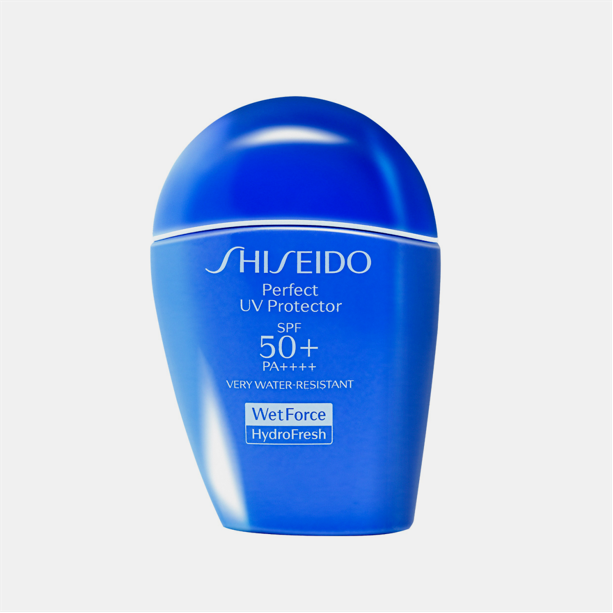

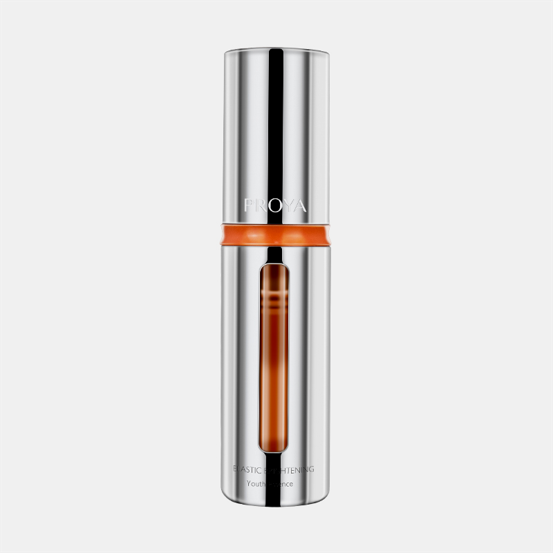
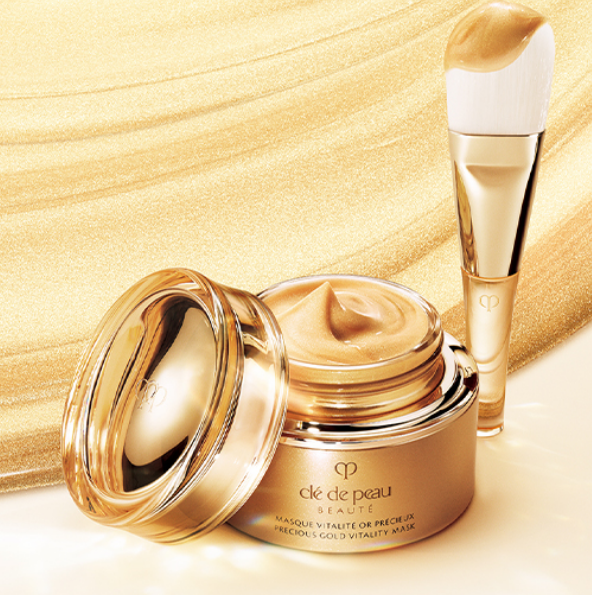
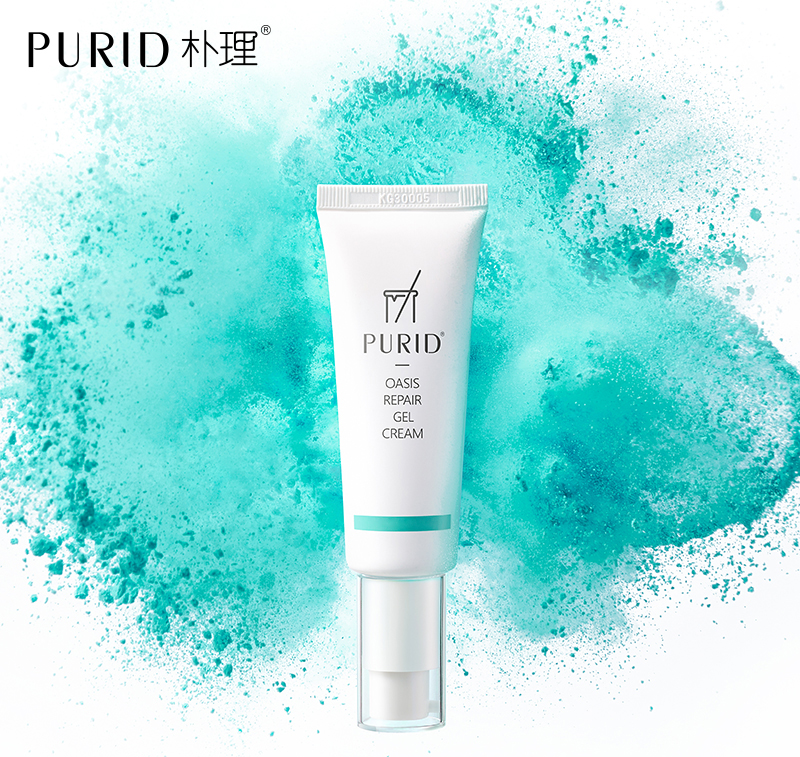
Thiotaurine
Why do so many big brands
favor it?
Let's find out together!

Thiotaurine, also known as 2-aminoethanethiosulfonic acid, is a potent antioxidant that scavenges free radicals produced by polycyclic aromatic hydrocarbons and protects against damage to fibroblasts caused by polycyclic aromatic hydrocarbons.
Although it may be unfamiliar to many, a growing body of literature suggests it has considerable skincare potential and market value, particularly in addressing skin anti-oxidation and anti-aging concerns.
As we all know, skin, like other organs, ages. After experiencing various types of internal (disease, hormonal changes) and external damage (air pollution, ultraviolet radiation, etc.), it will show signs of aging such as sagging, wrinkles, dullness, pigmentation, dryness, dehydration, and thinning of the stratum corneum.
The most important and direct way to combat aging is strict sun protection, followed by repairing the skin barrier, reducing oxidative stress, anti-glycation, and preventing inflammatory aging.
A little science: Antioxidants in cosmetics
The human body is constantly exposed to oxidants. Endogenous oxidants are produced through normal metabolic pathways. Exogenous oxidants are caused by environmental pollutants (such as smoke/fog/UV radiation/diet).
The essence of anti-oxidation is actually anti-free radical, blocking the spread of free radical chain reactions. Iron oxidizes and rusts, and the same is true for skin. Continuous contact with the outside world constantly produces free radicals in the human body. Free radicals are catalysts that accelerate aging. They damage skin tissue, protein structure, sugar molecules, fat molecules, and the genetic information of cells.
A major factor in skin oxidation is an excess of free radicals in the skin, while the role of antioxidants is to provide electrons to skin cells, inhibit oxidation, or prevent free radicals from being neutralized by eliminating them.
With research, scientists have gained a deeper and broader understanding of antioxidants, and more new products in cosmetic raw materials are constantly being recognized by consumers.
Our company has a number of antioxidants: sodium thiosulfate, EUK 134, VC-IP, dimethylmethoxybenzopyran, pterocarpan, glutathione, ferulic acid, etc. Today, we will focus on the super antioxidant - thiotaurine.
The biological activity of thiotaurine is as follows:
It has super antioxidant properties, preventing aging caused by oxidants and inflammatory factors; in addition, it also has anti-glycation, anti-pollution, and improves skin redness and dullness.
In short: Antioxidant, anti-inflammatory, anti-aging, repair
About Mechanism of action
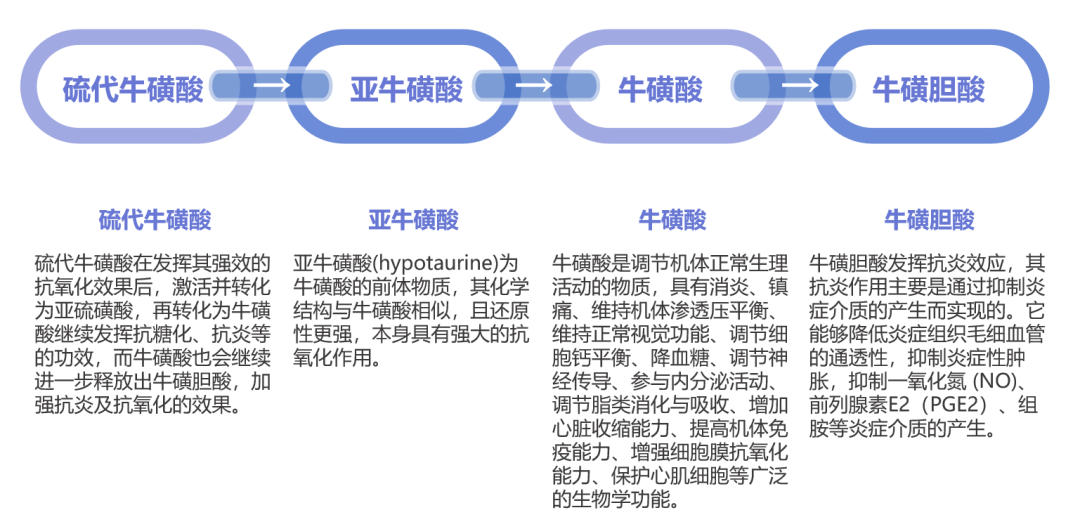
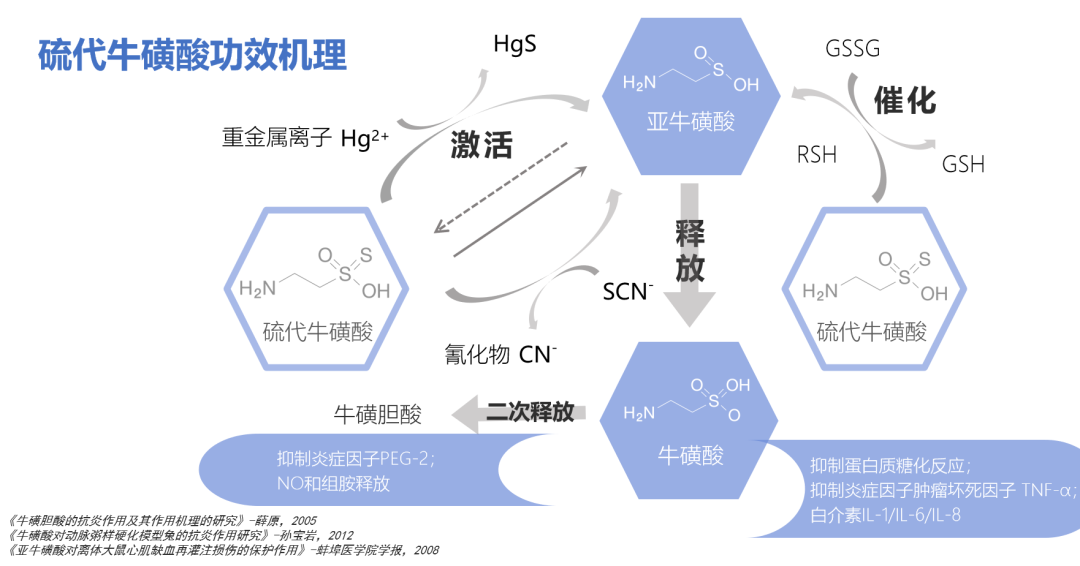
Regarding the metabolic pathway and mechanism of action of thiotaurine in the body, it can release hypotaurine, which then undergoes a redox reaction with glutathione to release taurine (simultaneously catalyzing oxidized glutathione into reduced glutathione, which also has good antioxidant properties), and finally can be converted into taurocholic acid.
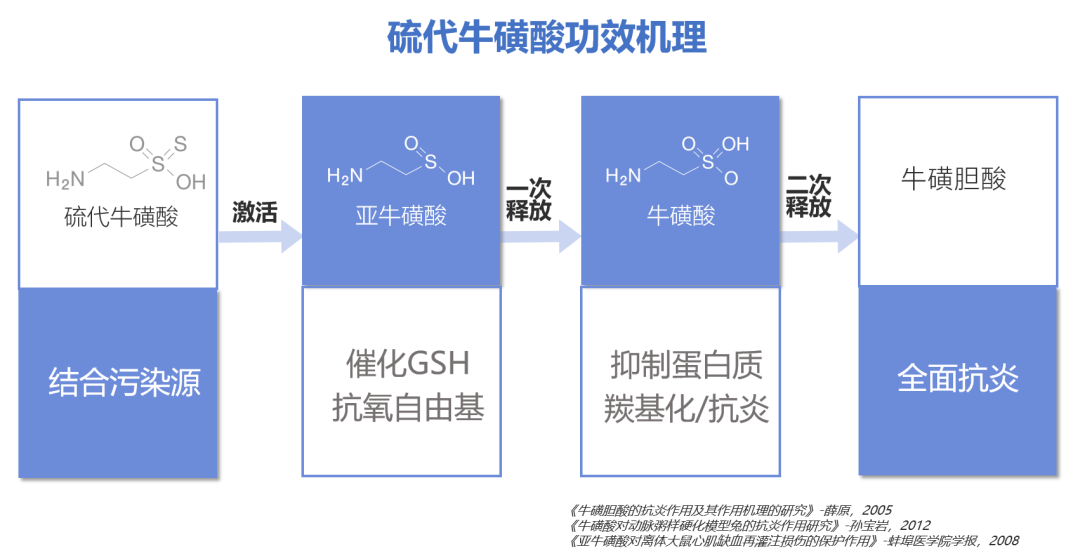
Through various stages, it scavenges free radicals, resists oxidative damage to cells caused by environmental stress, inhibits protein carbonylation and inhibits inflammatory responses, and enhances skin barrier function.
About Efficacy and characteristics
1, Reduce air pollution-induced peroxidation
2, Effectively promote cell proliferation and repair damage
3, Reduce the inflammatory response of pollutants on the skin
4, Has a significant anti-glycation effect
5, Effectively removes hydroxyl radicals caused by UV
6, Inhibits peroxidation induced by blue light or UVA
7, Protects against lipid peroxidation on the skin surface
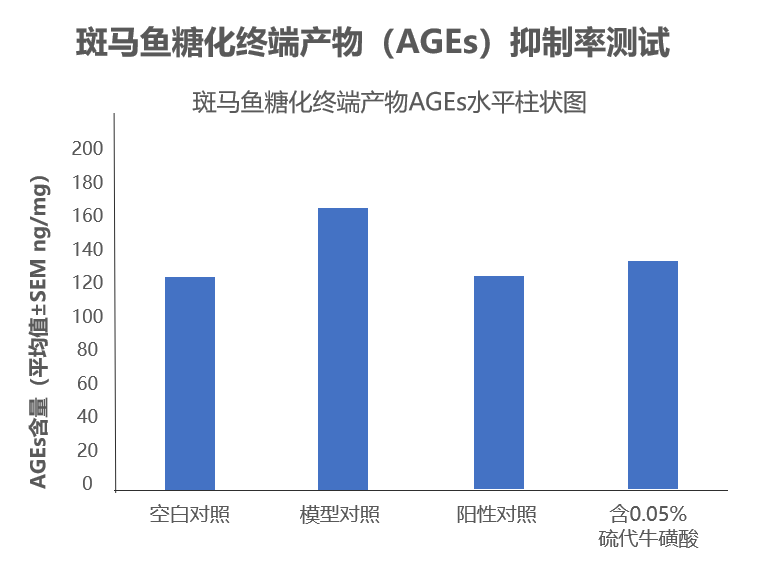
Has a significant anti-glycation effect
Studies have shown that 0.05% thiotaurine has a 76% (P=0.0095) inhibition rate of advanced glycation end products (AGEs) in zebrafish, indicating a significant anti-glycation effect.
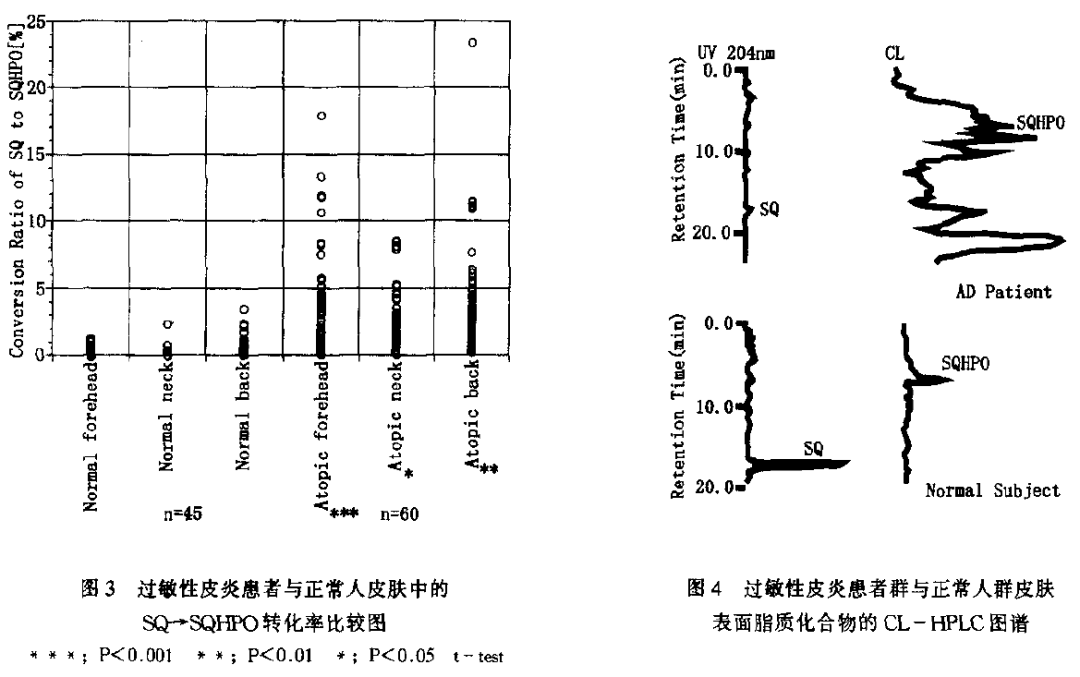
Lipid peroxidation-induced inflammatory response on the skin
As shown in Figure 3, the SQ conversion rate in the epidermis of patients with allergic dermatitis is higher than that of normal people, especially in the forehead, which is frequently exposed to sunlight. Lipid peroxides in the back epidermis of patients with allergic dermatitis were observed.
As shown in Figure 4, taking patients with allergic dermatitis as an example, lipid compounds other than SQ in the epidermis also undergo significant peroxidation.
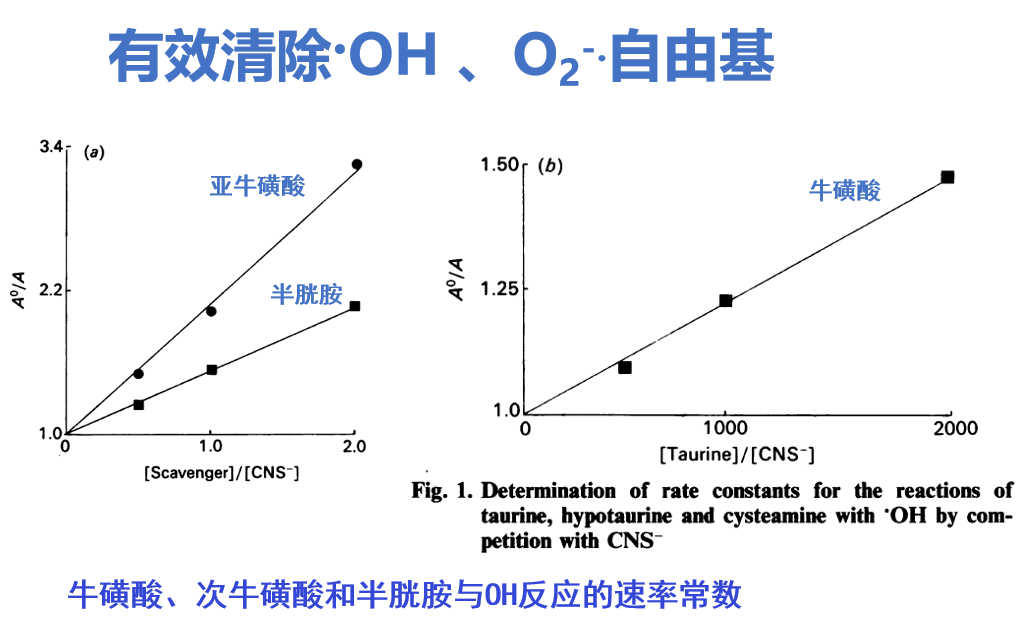
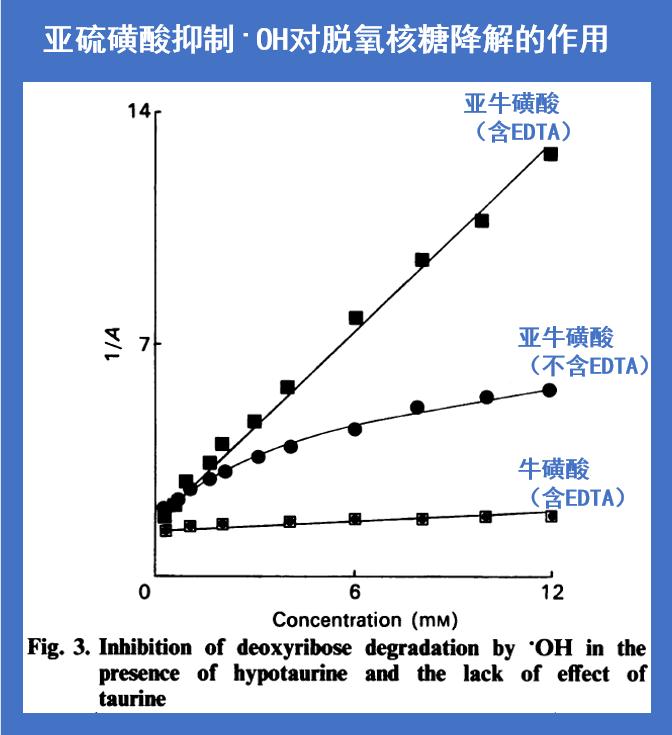
Effectively scavenges ·OH, O2-. free radicals
From the test results in Fig. 1 and Fig. 3, hypotaurine shows a more advantageous effect on scavenging ·OH.
In addition to scavenging ·OH, taurine is also very effective in scavenging O2-. (Please refer to the literature for details).
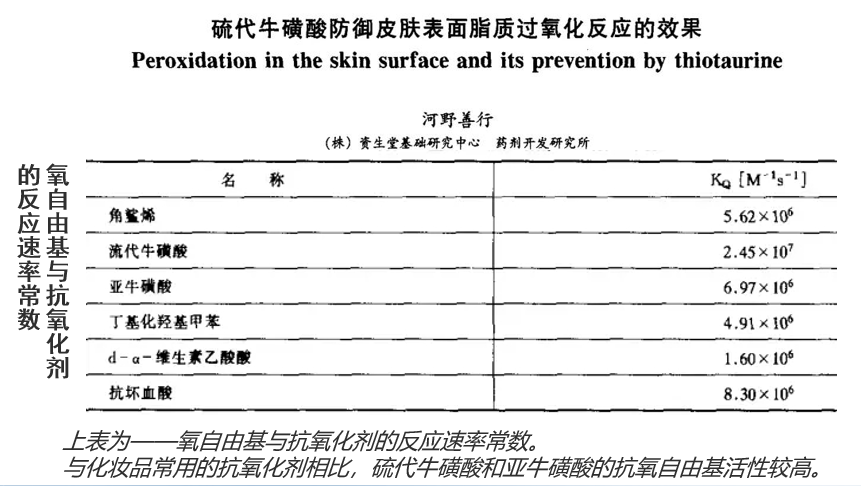
Protects against lipid peroxidation on the skin surface
Experimental results on the antioxidant activity of thiotaurine showed that:
Compared with the uncoated area and the area coated with blank cream, the oxidation of sebum in the area coated with thiotaurine cream was significantly inhibited.
It can prevent the initial stage of skin oxidation and supplement the deficiencies of the incomplete skin "antioxidant system".
Taurine V S Thiotaurine
The conjugated diene bonds in the taurine molecule are effective quenchers and scavengers of free radicals. These double bonds can combine with free radicals to remove excess free radicals in the body, especially superoxide anions and hydroxyl radicals; and by increasing the activity of antioxidant enzymes, it can block the chain reaction of lipid peroxidation in tissues, reduce the damage of lipid peroxides to the body, and achieve the effect of delaying aging.
"Thiotaurine" is a precursor of taurine. After entering the skin, it exerts its own strong antioxidant effect, then becomes hypotaurine to continue its effect, then becomes taurine to continue its effect, and finally becomes taurocholic acid to continue its effect!
This is a "loyal and righteous family", fighting for the antioxidant cause "generation after generation"!!! Worthy of "respect"!!!
About Application Guidance
1, Scope of application
Suitable for various functional cosmetics, recommended for anti-aging, wrinkle removal, sun protection repair, redness reduction, brightening and other series of products.
2, Recommended addition amount
Recommendation: 0.02~0.07%.
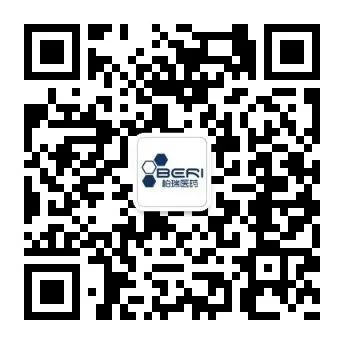
Welcome to follow our company's WeChat official account to learn more about the latest product information!
More Explore






